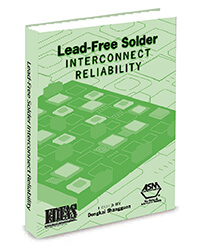This summer, the temperature reached 111°F in Silicon Valley, where I live. This historical record unmistakably brought home the “inconvenient truth”: global warming is upon us, for real – not in the future, but right here, right now.
It is incumbent on each and every one of us, in society and in the electronics industry, to do our part, and indeed do our best, to work towards a sustainable world.
What can we do? What can I do?
There are many things we can and should do as citizens. There are many more things we can do through our work in the electronics industry.
When I first joined the industry back in 1991, as a young engineer with a materials science background working for the Electronics Division of Ford Motor Co. in Dearborn Michigan, I was excited to witness firsthand the tremendous effort to eliminate chlorofluorocarbons (CFCs – an ozone-depleting substance, or ODS) from the printed circuit board (PCB) assembly process. There were serious questions: Can it be done? Especially for safety-critical products such as automotive controls? It took the effort of the entire industry over several years to get to the answer. Today, no-clean soldering is commonplace in the global electronics manufacturing industry.

At almost the same time, lead (Pb) – a predominant component of solder alloys that had been used across the global industry since the beginning of electronics – was becoming a target for elimination. I filed my first patent for lead-free solder alloys back in 1994 and presented my first paper on lead-free soldering in the same year. With the publication of my book “Lead-Free Solder Interconnect Reliability” in 2005, I welcomed the arrival of lead-free soldering in worldwide electronics manufacturing in 2006, along with many industry colleagues across the globe. In the process, I had the fortune of making many friends as we worked towards a common goal: a sustainable world for ourselves and our future generations.
Needless to say, I am but one of many professionals in the industry working hard to bring better products to the market and do our best for sustainability at the same time. Today, the challenges are even greater and the work must continue. It is gratifying to see that sustainability has become a goal for many companies across the industry and across the supply chain.
As someone with a materials science background, I know full well that materials science will continue to play a very important role in sustainability. Today, no-clean, lead-free and halogen-free solder pastes enable countless electronic products, and various Substances of Very High Concern (SVHC) continue to be addressed. High-quality materials with long storage life, shelf life, stencil life and pot life help minimize defects and waste in volume production. Ultra-low residue (ULR) fluxes eliminate the need for cleaning while offering compatibility with underfill and molding compounds.
At the same time, a portfolio of low-temperature solder alloys can help significantly reduce energy consumption during reflow, with particularly interesting new materials that enable soldering at lower temperatures, while producing solder interconnects with reliability performance comparable (or even superior) to higher temperature solders. Thermal interface materials in various forms are an important part of thermal management solutions for electronic products with enhanced product performance. Various high-reliability solder alloys are helping improve product life and reduce the number of failed products going to landfills. Nanomaterials and high-reliability alloys are enabling power electronics for electric vehicles and other environmentally friendly products.
Obviously, these are only a few of the many examples of materials solutions that can enable sustainability for electronics. There are many other important solutions in other parts of the supply chain and the industry. Design for the environment, energy efficiency in products and in manufacturing, use of recycled materials, clean energy, and so on, all play important roles in this endeavor. I am convinced that sustainability and strong performance can be achieved at the same time, and a sustainable business must be able to bring sustainability to the world we live in.
Feeling the 111°F heat, I am keenly aware that the challenges ahead are immense. But knowing what I know, I remain hopeful that by working together, sustainability is achievable.
We have no other choice.
For more information or to share your thoughts, please contact Dongkai Shangguan dksg@indium.com.


